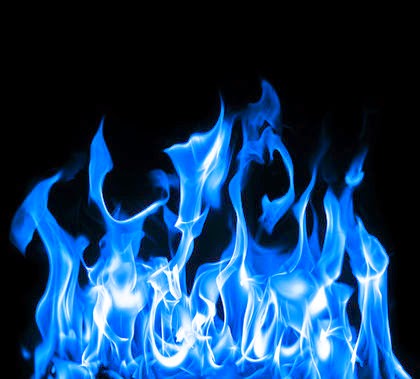 |
| Blue flame of natural gas |
In the areas of present-day Iraq, there were stories of “eternal fires” from Plutarch’s writings around 100 to 125 A.D., which was most likely natural gas seeping from cracks in the ground and ignited by lightning. I'm quite sure I would be freaked out if I saw this myself, but good for Plutarch for writing it down.
The first drilled natural gas well was in 1821 in Fredonia, New York by William H. Hart, who drilled a 27-foot deep well. Natural gas was used mainly as fuel for lamps in the 1800's, but after the invention of the ‘Bunsen Burner’ in 1855, natural gas demonstrated its greater potential for heating and cooking. Pipelines were needed to transmit natural gas and in 1891, a 120-mile long pipeline was completed to transport natural gas from central Indiana to Chicago. After World War II with improvements in metals and welding techniques, a pipeline network was constructed in the 1950's and 1960's.
Today, there is a vast network of natural gas pipelines. Just look at all the blue lines!
 |
| Today's U.S. natural gas pipelines |
Natural gas can be found in shale formations, sandstone beds, and coal seams. The diagram below illustrates the process of hydraulic fracturing, the process to get natural gas out of the ground. I will delve deeper into this topic later, but for now I hope this simple diagram will satisfy your curiosity.
In Arizona, the largest natural gas-fired plant produces 2,060 MW at the Gila River Power Station. According to the U.S. Energy Information Administration, in 2012 Arizona produced 117 million cu ft. of natural gas, a small fraction of the overall U.S. natural gas production. About one-third of Arizonans use natural gas as their primary home heating source. In your household, what do you use natural gas for?
 |
| Gila River Power Station, Arizona |
That's enough for now. I'm a little beat from all this talk about natural gas. But remember, this is just the beginning of natural gas, so more information soon to follow. Have an amazing day!




